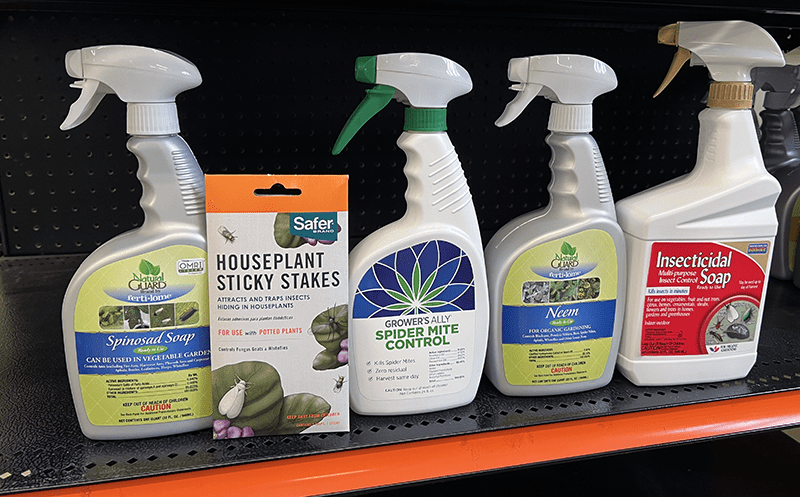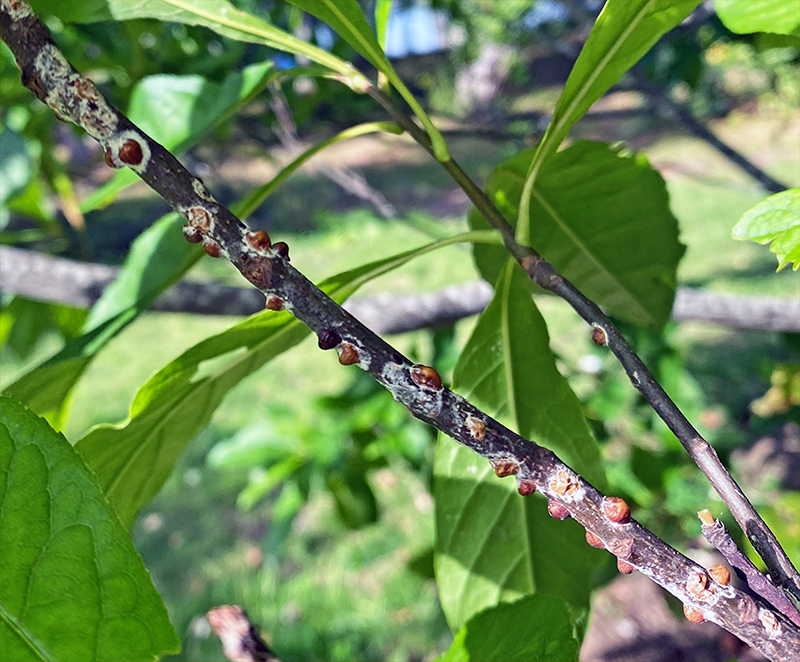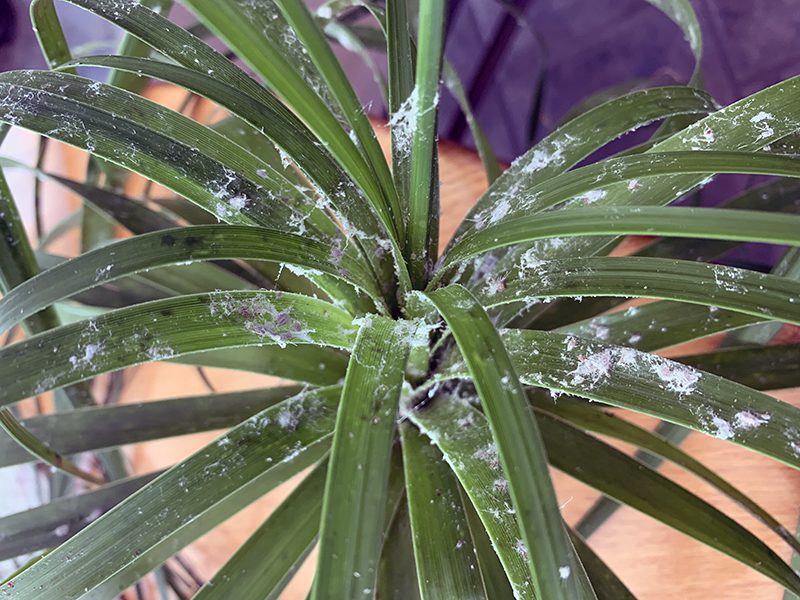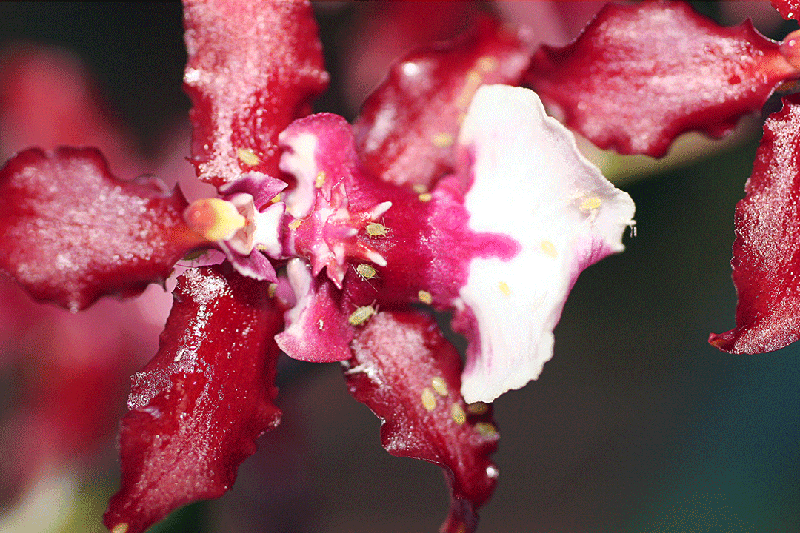Houseplant Pests
Houseplant Pests
scale, mites and mealy, oh my!
This is the time of year when pests become noticeable on houseplants. You might be seeing leaves turning yellow, or looking dirty on the undersides. Maybe you’re noticing webs, or stickiness on the plants or surfaces around the pots. You might even be seeing the insects themselves as the populations go from barely visible to wildly rampant, seemingly overnight. Since there are no natural controls of such pests indoors, plants can often become more infested at this time of year. Here are a few common pests and what you can do to control them.

Scale This insect often makes its presence known by the stickiness that accumulates on leaves and around the pots. As a sucking insect, it pulls plant juices out and excretes the sugar-rich remains, which becomes sticky. Some scales look like tan or brown bumps; these are known as armored scale. Others are white and soft, with no protective cover except a waxy coating. On houseplants, scale can be seen on stems and both sides of the leaves. When scale is in its crawler, or juvenile stage, they are quite small and may be harder to see.
Use several approaches to keep scale in check. 1. Wipe off what scale you can see. A soft cloth such as a baby washcloth moistened with insecticidal soap is good for this purpose. 2. After cleaning the plant, spray it well with insecticidal soap or neem. 3. Repeat the cleaning and spray at least three times, every seven to ten days. 4. If possible, move a scale infested plant to a cooler location. This is especially effective for any plant that can tolerate winter temperatures between 40° and 55° f, but isn’t recommended for tropical plants that like temperatures above 55.°


Mites: Some indoor plants are especially prone to mites, also known as spider mites. These are nearly impossible to see without magnification, but you may see leaves turning a stippled yellow, and very fine webs on the undersides of the foliage.
To treat mites: 1. Clean the plant either with a spray of water in the kitchen sink, or by wiping with a soft washcloth dampened with insecticidal soap. Do not use dish detergent, as these products are made to clean dishes, not plants. 2. Spray with a miticide, directing the spray to the underside of the leaves as well as the stems. Repeat that spray every week or two.
Mealybug: These are a soft-scale insect that flourish in warm environments. They are white and cottony in appearance. To treat mealybug: saturate a soft cloth or cotton balls with rubbing alcohol, and wipe off all the mealybug you can see. Use a Q-tip to get into the crevices between leaves and stems. After cleaning, spray with neem or insecticidal soap. Once a plant is infested with mealybug, you’ll have to continue to monitor and treat it regularly.

Whitefly: Although less common indoors than the pests listed above, whitefly occasionally makes an appearance on houseplants and herbs grown inside. You’ll know that you have whitefly if tiny white insects fly out from a plant when you brush against it. To treat whitefly: Spray your plant well with insecticidal soap or neem. Use the yellow sticky cards near infested plants to trap the insects.
Fungus Gnats: These pesky, black insects resemble fruit flies. They are most common when you first bring plants back inside after the summer, but they can show up at anytime. To control fungus gnats: Put up yellow sticky traps to catch the adults. Water your plants with spinosad in the watering can to kill the larvae that feed in the soil. Let the soil in the pots dry out slightly between watering, as fungus gnats flourish in damp potting mix.
Aphids: These appear most frequently on new growth or flowers. Wash them off with a spray of water in the kitchen sink, followed by an application of insecticidal soap.

Keep Them Clean! If you’re able to put your plants in the shower at least once during the winter, that’s a good way to keep plants clean and healthy. This washes away dust, and can often catch the beginning of an insect infestation.
Subscribe To Our Newsletter
Sign up for our weekly email about sales and events.
